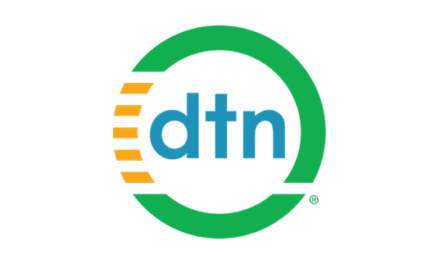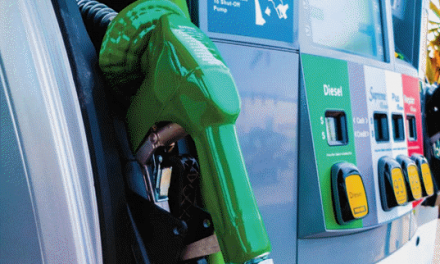“Fueled for Thought” By Joe O’Brien, Source North America Corporation
Recent changes in both global and U.S. energy policies have the potential to significantly impact the landscape of retail fuel over the next five to 10 years. The historic Paris climate conference (COP21) in December has set in motion a global commitment to reducing reliance on fossil fuels. In addition, the United States Environmental Protection Agency finalized two key regulations during the last quarter of 2015 that directly affect operations on the forecourt: National Ambient Air Quality Standards and Renewable Fuel Standard volume requirements. These measures represent steps toward long-term, sustainable environmental responsibility. As a result, it is essential that fuel retailers keep an eye on these issues in the short term in order to prepare for their impact. Marketers who align their operations to keep pace with emerging environmental regulations will be best positioned to capitalize on changing consumer demand and minimize costs associated with compliance issues.
Paris Climate Agreement
In December, 195 countries agreed at COP21 to reduce global warming by limiting the increase in the average global temperature to less than 2°C, with a goal of eventually limiting it to 1.5°C. Countries will be required to report progress on their efforts as early as 2018.
The agreement presents a long-term challenge to fossil fuel companies already grappling with the existing challenges of weak demand for — and overproduction of — oil. According to a recent report by Fortune, oil and gas companies could face stranded carbon assets — oil and gas reserves that companies include in their valuations, but end up never being drilled due to the Paris Agreement. Shaking the foundation of the fossil fuel industry’s profit margins could cause widespread economic repercussions, and will almost certainly impact fuel prices at the pump. If this market volatility occurs, fuel retailers who maintain competitive pricing strategies and who incentivize C-store traffic through loyalty programs and engaging multimedia promotions will be in a stronger position to preserve their bottom lines.
Despite the uncertain future facing oil and gas companies, the Paris Agreement will no doubt spur innovation as it drives support for alternative fuels and stricter compliance through equipment design. As an initial step towards that goal, President Obama has assigned funding to support innovation in the energy sector. The proposed Fiscal Year 2017 Department of Energy budget includes $5.85 billion in discretionary funding for clean energy research and development, which represents a 21% increase from FY 2016. Of that $5.85 billion, over $880 million is earmarked for sustainable transportation technologies that increase the accessibility of domestic renewable fuels. While this represents a meager budget relative to other federal disbursements, it’s a starting point, that, combined with government incentives including federal tax credits and grants for alternative fuels station equipment, signals government financial support for renewable fuels. Marketers who stay abreast of these developments will not only be able to capitalize on government incentives, they can time the introduction of alternative fuels equipment to their forecourt in a competitive manner.
RFS Standards
Coincidentally, on the first day of COP21, the U.S. Environmental Protection Agency issued its final volume requirements for the Renewable Fuel Standard. While the final volumes (18.11 billion gallons of biofuels need to be blended into the fuel supply in 2016) are higher than the volume proposed by the EPA in June 2015, they are substantially lower than the 22.25 billion gallons mandated by Congress in 2007.
The RFS remains a highly contentious issue, with entities on both sides filing lawsuits. Independent refiners, including Valero Energy Corp., are challenging the RFS in order to shift the responsibility of meeting the obligations further downstream — from oil refiners to fuel blenders — in order to remove barriers to renewable fuels growth. The American Petroleum Institute filed a lawsuit challenging the EPA’s failure to meet deadlines for the 2014 and 2017 biomass-based diesel volumes and for requiring more cellulosic ethanol in 2016 than exists.
Opponents of the RFS, including the API, continue to argue that blends higher than E10 are unsafe for most vehicles and that the RFS ethanol mandates could saturate the fuel supply with a blend that that is incompatible with most vehicles. However, according to a Renewable Fuels Association analysis, E15 compatibility is on the rise, with auto manufacturers explicitly approving E15 in more than 70% of model year 2016 vehicles, which represents a 10% increase in the previous year’s compatibility rate.
If the courts rule in favor of the independent refiners to move the onus of RFS compliance to fuel blenders, and the E15 automotive market continues to grow, renewable fuels may soon be able to penetrate the market in a more significant way, creating a shift in consumer demand for ethanol-blended fuels. Without question, the 2017 RVOs will be a key benchmark for the potential growth. The proposed RVOs for 2017 are due March 31 and they must be finalized by the end of November.
New NAAQS Regulation
In late 2015, the U.S. Environmental Protection Agency lowered the ozone National Ambient Air Quality Standards (NAAQS) from 75 parts per billion (ppb) to 70 ppb.
In December 2014, the EPA proposed to lower the NAAQS to between 65 and 70 ppb (the agency also sought feedback on the possibility of lowering NAAQS to 60 ppb). Although many critics questioned the merit of lowering the standard, citing the minimal improvement in public health it would yield and the economic risk it could cause, the 70 ppb rule became binding on Dec. 25, 2015.
Other existing environmental programs such as power plant emissions regulations and the Tier 3 vehicle emissions and fuels standards should help states meet the new standards. That notwithstanding, it is expected the lower standard will increase the number of areas designated as “non-attainment” areas (areas that do not comply with the lower 75 ppb standard). Energy Tomorrow, a project led by the American Petroleum Institute, forecasts that the number of counties that will be considered non-attainment areas could jump from 217 to 958 under the new standard.
States with non-attainment designations will be required to implement State Implementation Plans in order to bring those areas into compliance. During commentary for the 60 ppb proposal, NACS stated that more stringent ground-level ozone standards could prompt states to require the pricier reformulated gasoline be sold at more gas stations, enforce more stringent Reid Vapor Pressure requirements and possibly retain Stage II recovery requirements where they might otherwise be decommissioned. The EPA is expected to issue nonattainment designations by October 2017.
Keep an Eye Toward the Future
Although it is impossible to predict exactly how and when the environmental policy changes and regulations will begin to transform the forecourt in earnest, fuel retailers would be wise to monitor emerging developments over the next few years to gauge their traction. When consumer demand for renewable fuels does take off, it will represent an opportunity to attract new customers and increase market share. Several large retailers have already introduced E15 in anticipation of the growth available in that market.
With average fuel prices projected to remain low in 2016 and c-Stores realizing in-store sales growth, now may be the time to invest in alternative fuels equipment upgrades. Experienced fuel equipment suppliers can be a valuable resource to marketers grappling with strategic equipment acquisitions and compliance requirements. Retailers who collaborate with a trusted fuel equipment supplier to prepare for future demand and compliance mandates will position their sites to remain competitive amid the widespread industry change.
Joe O’Brien is Vice President of Marketing at Source™ North America Corporation. He has more than 20 years experience in the petroleum equipment fueling industry. Contact him at [email protected].









